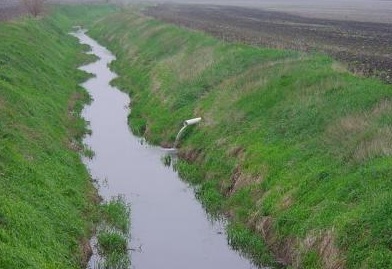
News
What is the risk of manure runoff?
December 22, 2010 by University of Wisconsin Discovery Farms
NEWS HIGHLIGHT
What is the risk of manure runoff?
 December 22, 2010 –
December 22, 2010 –
Producers, agricultural consultants and agency personnel who have read or
listen to information from the Discovery Farms Program know that the winter
months with the greatest risk of runoff (and therefore nutrient and manure
loss) are February and March. Many have heard me explain that there are years
when spreading manure in December or January is a great idea, but what about
this winter?
December 22, 2010, Pigeon Falls, WI –
Producers, agricultural consultants and agency personnel who have read or
listen to information from the Discovery Farms Program know that the winter
months with the greatest risk of runoff (and therefore nutrient and manure
loss) are February and March. Many have heard me explain that there are years
when spreading manure in December or January is a great idea, but what about
this winter?
This year is a perfect
example of why one set of rules or recommendations won’t work. When we say
spreading manure in the winter can be a good idea, that is for conditions where
the manure can come in contact with the soil and has an opportunity to bond
with soil particles. There are times when the ground is not covered in snow (or
less than two inches) and times when the ground is not frozen in December and
January; those are not the conditions we have today. This region of Wisconsin
received 20 to 22 inches of snow on December 11 and 12th and the recent weather
ensures that this snow is not going anywhere soon.
 |
|
Manure spread on this much
snow has no opportunity to bond with the soil; and when snowmelt occurs, the
manure will be carried away with the running water. If you don’t have storage
what can you do? Stacking manure from now until the end of March will result in
a large pile that has to be spread in the spring, but it reduces the risk of
runoff as long as you clear the snow before starting the pile. Another choice
is to clear an area for spreading or spread on portions of the field that the
wind has blown the snow off or reduced the depth. But this takes equipment,
time, fuel and the right setting for it to even be practical. Another choice is
to apply on fields with little risk of runoff, on fields away from sensitive
areas and on internally drained fields with deep soil, so as to also protect
groundwater.
There are no great choices
and there are no easy ways to deal with the current conditions. It is up to
producers to think about what is going to happen when snowmelt occurs and look
for assistance from local crop consultants or agency personnel (Land Conservation,
NRCS or UW-Extension) if you have questions. People who don’t have cattle or
have never had to deal with these conditions should try and understand how
difficult it is to make a living in a profession where you don’t control the
price you receive, the price you pay or the weather.
Have a safe and prosperous
New Year!